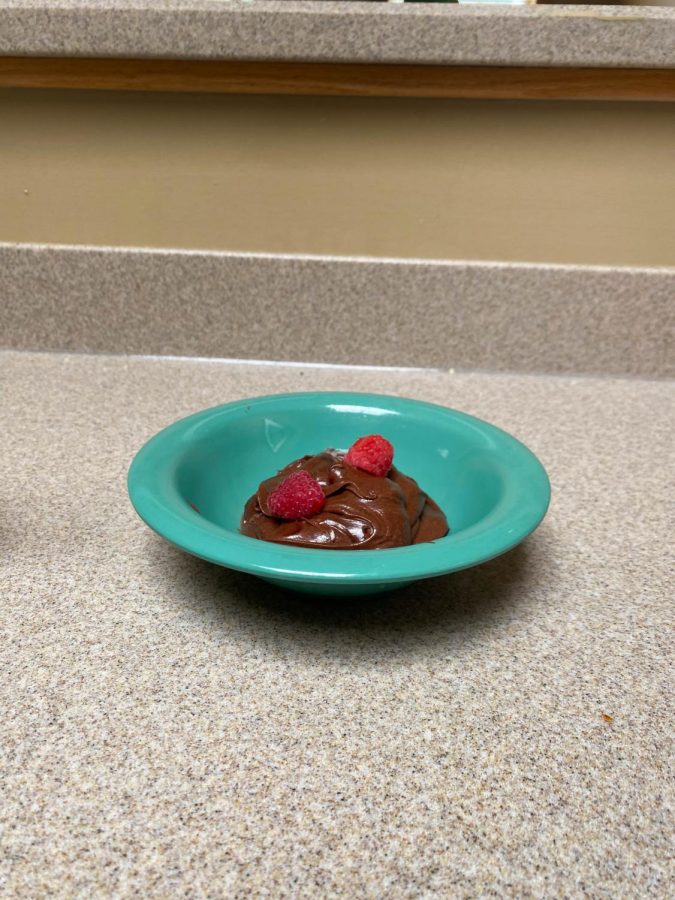
This year, for the first time since Thanksgiving was designated a holiday, it will share the spotlight with Chanukah. This rare occurrence, which will not happen again for another 70,000 years, has prompted Jews all over the country – and even around the world – to capitalize on the confluence of these two holidays by creating new chatchkes, recipes, and traditions.
Buzzfeed began stirring things up in early October when they published, “How to Celebrate Thanksgivukkah, The Best Holiday of All Time.” Buzzfeed, that reliable source of procrastination and entertainment, offered up a whole slew of creative ideas combining the two holidays. My personal favorite wasn’t even food related – it was yarmulkes decorated with “Pilgrim” buckles on them. Which doesn’t even make sense because you don’t have to wear yarmulkes on Chanukah since it’s a festival and not a holiday, but more on that later.
The name Thanksgivukkah was coined by Dana Gitell, a Massachusetts-based marketing specialist, in 2011. It is even trademarked in Massachusetts. Gitell realized the potential for this holiday, known as a “portmanteau holiday,” and decided she had to “sell” it.
“It’s funny for Jews to think about the whole world stopping on a Jewish holiday because that’s not how it works in this country,” Gitell remarked in an interview with Time Magazine.
“There’s something that feels good, to share a holiday moment like that with your whole family and the whole country.” Gitell’s catchy name is not the only part of this mash-up that we are anticipating, however.
What excites most Jews about Thanksgivukkah are the endless opportunities for new food combinations. Thanksgiving is a holiday that focuses on eating and on eating together, which is quite handy because that’s essentially the point of Jewish holidays.
We Jews have an expression used to define every Jewish holiday: “They tried to kill us, we survived, let’s eat.” One thing must be made clear first, however. Chanukah is not actually a holiday, but rather is considered a festival due to the fact that it is not religious. This is an important distinction because in the United States, Chanukah is blown out of proportion in order to compete with Christmas—which will be harder to do this year. This is bad for Hallmark, but good for us, as we contemplate the extensive new opportunities Thanksgivukkah will bring.
Because Chanukah celebrates the miracle of a small amount of oil lasting for eight days, the main ingredient of Chanukah food is—you guessed it!—oil. The oil is not the only thing that endures the eight days of Chanukah, however. The smell of stale oil, a direct byproduct of frying latkes, will stay embedded both in your house and in your skin for eight days as well.
That part is not a miracle, but we put up with it.
For Ashkenazic Jews, the traditional latke toppings are sour cream and applesauce. But I’m looking forward to swapping those out for cranberry sauce, or at least adding it to the mix. The other traditional food eaten on Chanukah is sufganiyot, or jelly doughnuts. Basically anything fried is fair game. Sufganiyot could be made with pumpkin filling, or with squash, for a more savory doughnut. (Look at the suggested dishes for more ideas).
The list keeps going: cranberry latkes, Manischewitz-infused turkey. There is more of an emphasis on making Thanksgiving food with a touch of Chanukah to go with it. But this makes sense; Thanksgiving has more food rituals than Chanukah does and those rituals are better known and “American.” And so the emphasis is on bringing a Jewish flair to the traditional Thanksgiving meal.
But the more Americanized Buzzfeed is by no means the only source for Thanksgivukkah suggestions. Manischewitz, the producer of the sickly sweet wine-cum-cough syrup you got drunk off of at the last Passover seder you attended, launched a multi-million dollar campaign publicizing the holiday. But to distance itself from Gitell’s Thanksgivukkah, the kosher food giant is calling the holiday Thanksgivukah. Huge difference, we know.
According to the New York Times, Manischewitz’s staple product is broth. Chicken broth, beef broth, low sodium broth, you name it. The broth has been rebranded this holiday season however, and is now known as “The Official Broth of Thanksgivukah.”
Manischewitz is not the only old school Jewish institution to jump on the Thanksgivukkah bandwagon. Kutcher’s Tribeca, the younger, hipper cousin of the beloved Catskills resort of the same name, will be serving a three-course Thanksgivukkah meal. The menu, straddling Old World Jewish cooking and New England’s finest, includes sweet potato latkes topped with melted marshmallows and pumpkin shlishkas, a type of Hungarian gnocchi.
Marketable ideas, in addition to food, have been popping up all over the internet and innovators are already profiting off of the rare confluence. Mount Zion (on Hamline & Summit) offered a “menurkey” making workshop this past Sunday, referring to a menorah shaped like a turkey. Gitell is selling a shirt that proclaims, “8 Days of Light, Liberty, & Latkes.”
Rumor has it that zazzle.com is selling Thanksgivukkah wrapping paper. “Nun, Gobble, Hey, & Shin” is written all over the wrapping paper, a parody of what is written on a dreidl, “Nun, Gimel, Hey, Shin,” an acronym for “a great miracle happened there,” referring to the Chanukah miracle in Israel.
Thanksgivukkah has received both national and international attention. The mayor of Boston has decided that November 28, 2013 will forever be known as Thanksgivukkah. Thanksgivukkah celebrations are being planned in England and in Israel. But not everyone has so openly embraced the super holiday.
Some believe that the merging of the two names trivializes the Jewish festival. This gets complicated. Chanukah is a trivial festival to begin with. How much more harm can be done? But since both holidays celebrate similar things, neither should be subjugated nor diminished more than the other. Elana Lubka ’14 commented, “There needs to be more “Chana” in the “-iving.” Israel’s Haaretz raised the question, “Why not ‘Chanksgiving?’”
But because the majority of the world operates on the Gregorian calendar, we interpret this occurrence as Chanukah “falling on” Thanksgiving. But Thanksgiving was declared an American national holiday 150 years ago and Chanukah was declared a Jewish national holiday 2178 years ago.
Chanukah happens on the same day every year in the Jewish calendar. Thanksgiving, on the other hand, does not have a set date. The Jewish year is about 11 days shorter than the Gregorian year. And so in order to keep things somewhat aligned, we add a leap month 7 times every 19 years.
But rather than focus on the potential competition between the two traditions, many have chosen to look instead at the similarities. Both Chanukah and Thanksgiving celebrate independence and unexpected bounty. The Pilgrims were searching for religious freedom. The ancient Hebrews were fighting for freedom from the Greeks.
“Though the Pilgrim story isn’t our story, Jews in America reap the benefits of religious freedom that the pilgrims came to find,” explains Ronit Zemel ’15 who weighed in from Buenos Aires, where she is currently abroad. “Though I usually don’t call myself a patriot, [religious freedom] is something that should be celebrated. We are free to be Jewish in the United States, both culturally and religiously, and Thanksgivukkah will maybe be a reminder that we can’t take that for granted.”
Is Thanksgivukkah a rallying cry for increasingly secularized American Jews? The now almost total assimilation of American Jews has left out many of the more traditional Jewish holidays. Chanukah is still left with its symbols, traditions, and stories. But Chanukah has been secularized, commodified, and marketed to its limits in order to compete with Americans’ notion of Christmas. By combining Thanksgiving and Chanukah, are we simply providing American Jews with a shortcut to greater assimilation? Is it possible for Jewish traditions to be melded so seamlessly with traditions that represent the very essence of American culture?
The website MarketWatch sees the convergence of the two holidays not as a potential for cultural mixing, but as a good way to jumpstart shopping for the holiday season. They point out that retailers are using Thanksgivukkah to create a greater frenzy on Black Friday.
The novelty will eventually wear off, however, and when Thanksgivukkah t-shirts, wrapping paper, and menorahs are pulled out next year, we will reminisce about the time that the American public almost embraced a Jewish holiday.
Chanukah 2014 will end on Christmas Eve. My guess is that we won’t be buying t-shirts celebrating the merging of those two nights. Retailers and marketers will be focused on selling Christmas and the meaning and lessons derived from Thanksgivukkah will all but be forgotten.
Most people I’ve spoken with are not going to make a huge deal out of the coincidence of Thanksgiving falling on the second night of Chanukah. But they are, however, preparing their stomachs for the inevitable second meal on Thursday night. Once the turkey is gone and the leftovers distributed to every family member, the menorah will be lit, the dreidls will be spun, and the latkes will come out. And in two days, when you’re hungry again? Rumor has it that leftover latkes and turkey make great sandwiches.
Thanksgivukkah Recipe Idea:
Baked Pumpkin-Spiced Suganiyot
(Recipe from courier-journal.com)
2 tablespoons unsweetened apple butter
½ cup oat flour
½ cup sweet rice flour
¼ cup almond meal
1½ teaspoons cinnamon
1 teaspoon baking powder
½ teaspoon ginger
½ teaspoon nutmeg
½ teaspoon salt
¼ teaspoon allspice
1⁄8 teaspoon ground cloves
2 large eggs
¼ cup + 2 tablespoons milk
1⁄3 cup pumpkin puree
2 tablespoons unsweetened applesauce
¼ cup maple syrup
2 tablespoons oil
1½ teaspoons vanilla extract
1 cup Brownulated sugar,
1 tablespoon arrowroot starch or corn starch
Instructions:
Preheat over to 350 degrees and grease a doughnut pan.
In a quart-size plastic bag, add the apple butter, seal and push the contents to one corner of the bag. Snip off a little corner to create a pastry bag. Set aside.
Combine all the dry ingredients in a small bowl. In another bowl, whisk the eggs together, and then add the milk, pumpkin puree, applesauce, maple syrup, oil and vanilla extract. Whisk until well combined.
Pour the wet mixture into the dry ingredients and stir just until combined, being sure not to overmix. Add the doughnut mixture to a gallon bag, seal and lightly push the contents to one corner of the bag. Snip off a corner of the bag and pipe the batter into each of the molds, stopping about half way. Switch to the apple butter and pipe a stream of apple butter around the center line of each doughnut. Add the rest of the doughnut batter, filling just below the top of each mold.
Bake for about 18 to 22 minutes, until golden brown around the edges. Let cool in pan for about five minutes. Slide a spatula around the edges of the doughnuts to help loosen them out.
Place on a cooling rack.
While the doughnuts cool, add the sugar and starch to a high-powered food processor to create a fine powder. Once the doughnuts are completely cooled, sprinkle the dark powdered sugar over top of the doughnuts, or use a flour sifter.
Makes 8 to 10.





Jake Parsons • Sep 11, 2019 at 1:50 pm
hello!,I like your writing very much! share we communicate more about your post on AOL? I require an expert on this area to solve my problem. Maybe that’s you! Looking forward to see you.
Andrew Rees • Sep 10, 2019 at 8:13 am
Thanks for sharing excellent informations. Your site is very cool. I am impressed by the details that you’ve on this website. It reveals how nicely you perceive this subject. Bookmarked this website page, will come back for extra articles. You, my friend, ROCK! I found simply the information I already searched all over the place and simply couldn’t come across. What a perfect web-site.
Lisa Mitchell • Sep 5, 2019 at 1:28 pm
My spouse and I stumbled over here from a different web page and thought I should check things out. I like what I see so now i am following you. Look forward to looking into your web page for a second time.
Like • Aug 9, 2019 at 5:04 am
autoliker, auto liker, Autolike International, Auto Liker, Working Auto Liker, Photo Liker, autolike, auto like, Autolike, Status Liker, Autoliker, Autoliker, Photo Auto Liker, Increase Likes, Status Auto Liker, ZFN Liker, Auto Like